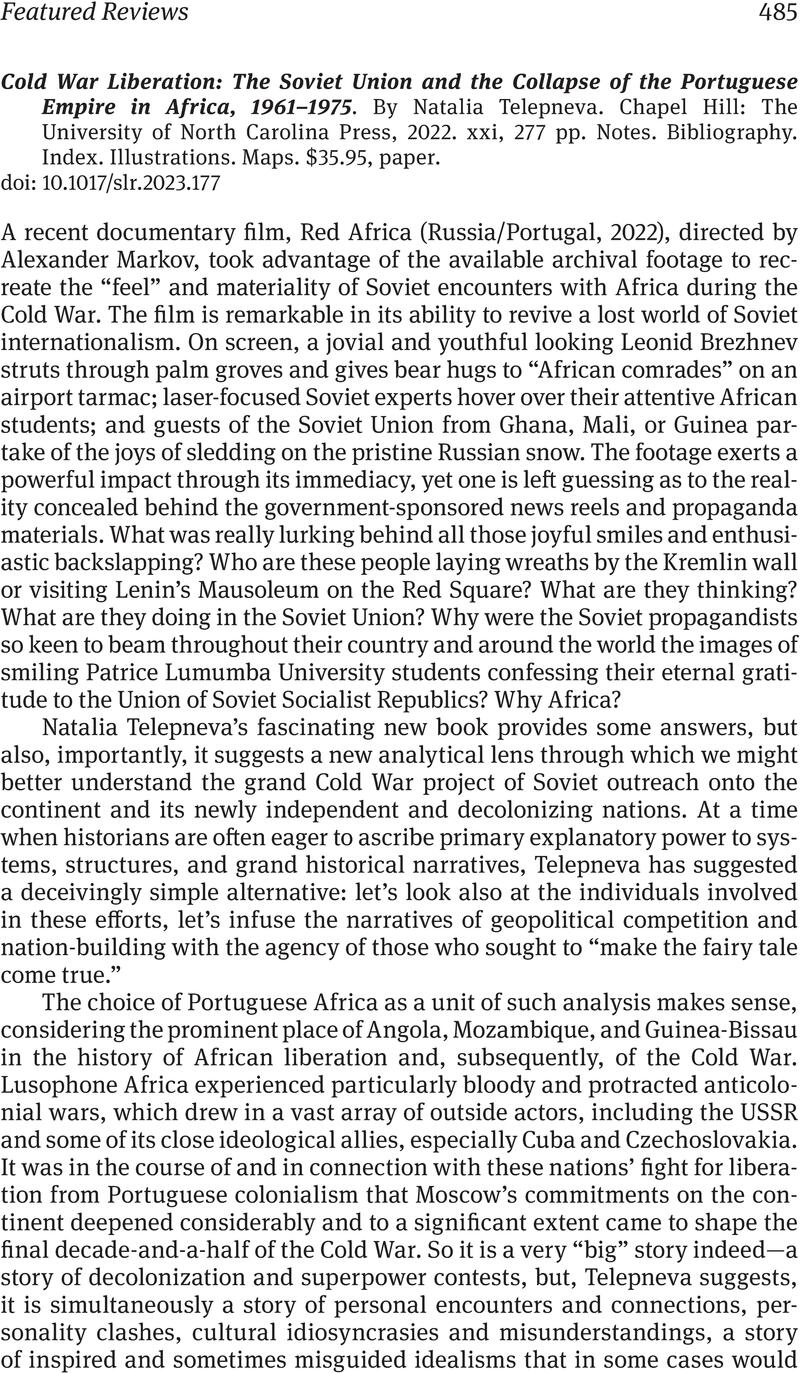No CrossRef data available.
Published online by Cambridge University Press: 01 November 2023

5. Davidson, Apollon and Filatova, Irina, “African History: A View from Behind the Kremlin Wall,” in Matusevich, Maxim, ed., Africa in Russia, Russia in Africa: Three Centuries of Encounters (Trenton, NJ, 2006), 111–31Google Scholar.
6. Westad, Odd Arne, The Cold War: A World History (New York, 2019)Google Scholar; Mazov, Sergei Vasil΄evich, A Distant Front in the Cold War: The USSR in West Africa and the Congo, 1956–1964 (Washington, DC; Stanford, 2010)Google Scholar.